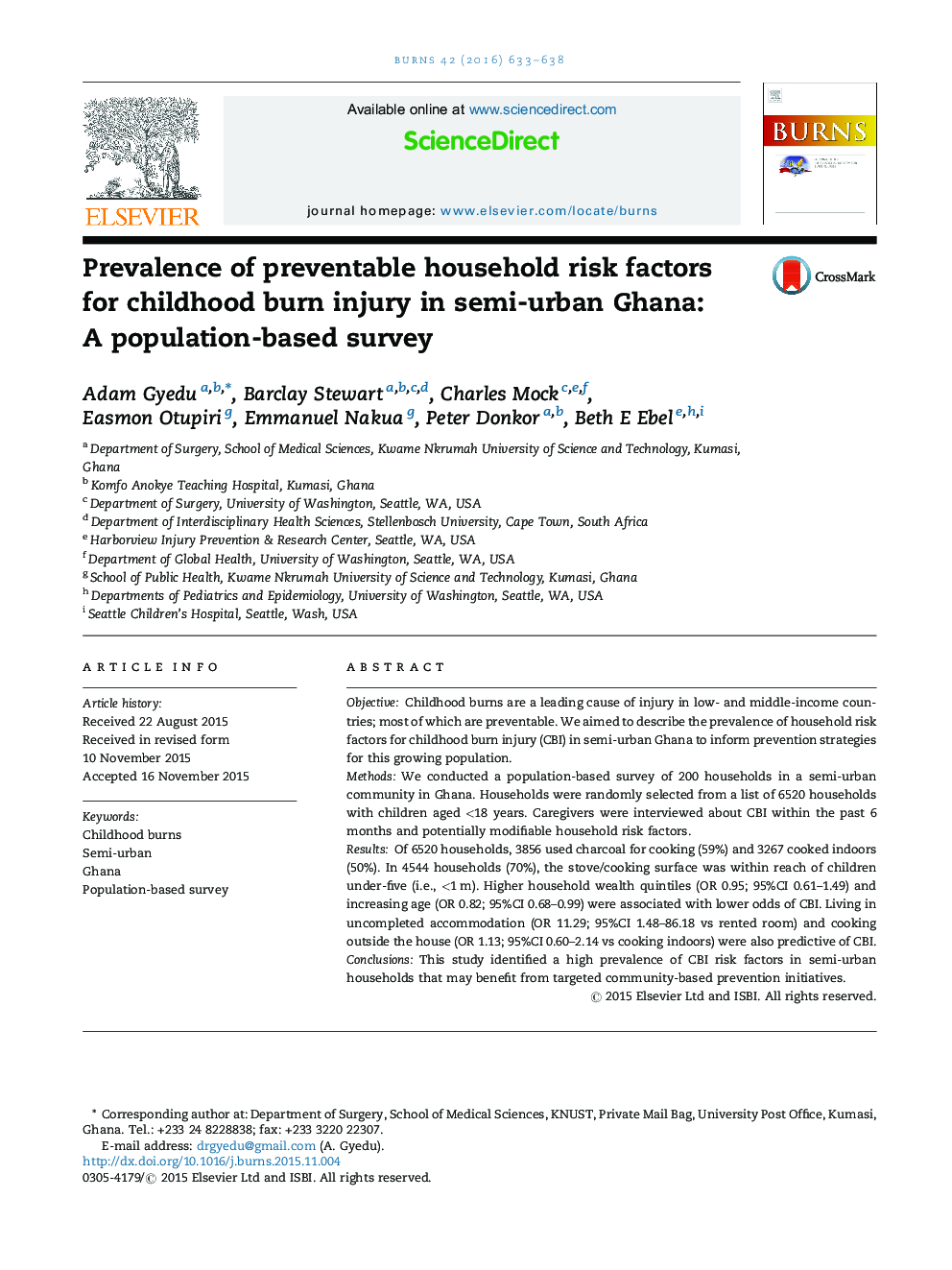| کد مقاله | کد نشریه | سال انتشار | مقاله انگلیسی | نسخه تمام متن |
|---|---|---|---|---|
| 3104142 | 1191642 | 2016 | 6 صفحه PDF | دانلود رایگان |
• Prevalence of household risk factors for childhood burns in semi-urban Ghana is high.
• 50% of households cook indoors in the absence of a separate kitchen.
• In most households, the stove/cooking surface is within reach of children under-five.
• Higher household wealth quintiles and increasing age were associated with lower odds of childhood burn injuries.
• Living in uncompleted accommodation and cooking outside the house were also predictive of childhood burn injuries.
ObjectiveChildhood burns are a leading cause of injury in low- and middle-income countries; most of which are preventable. We aimed to describe the prevalence of household risk factors for childhood burn injury (CBI) in semi-urban Ghana to inform prevention strategies for this growing population.MethodsWe conducted a population-based survey of 200 households in a semi-urban community in Ghana. Households were randomly selected from a list of 6520 households with children aged <18 years. Caregivers were interviewed about CBI within the past 6 months and potentially modifiable household risk factors.ResultsOf 6520 households, 3856 used charcoal for cooking (59%) and 3267 cooked indoors (50%). In 4544 households (70%), the stove/cooking surface was within reach of children under-five (i.e., <1 m). Higher household wealth quintiles (OR 0.95; 95%CI 0.61–1.49) and increasing age (OR 0.82; 95%CI 0.68–0.99) were associated with lower odds of CBI. Living in uncompleted accommodation (OR 11.29; 95%CI 1.48–86.18 vs rented room) and cooking outside the house (OR 1.13; 95%CI 0.60–2.14 vs cooking indoors) were also predictive of CBI.ConclusionsThis study identified a high prevalence of CBI risk factors in semi-urban households that may benefit from targeted community-based prevention initiatives.
Journal: Burns - Volume 42, Issue 3, May 2016, Pages 633–638
